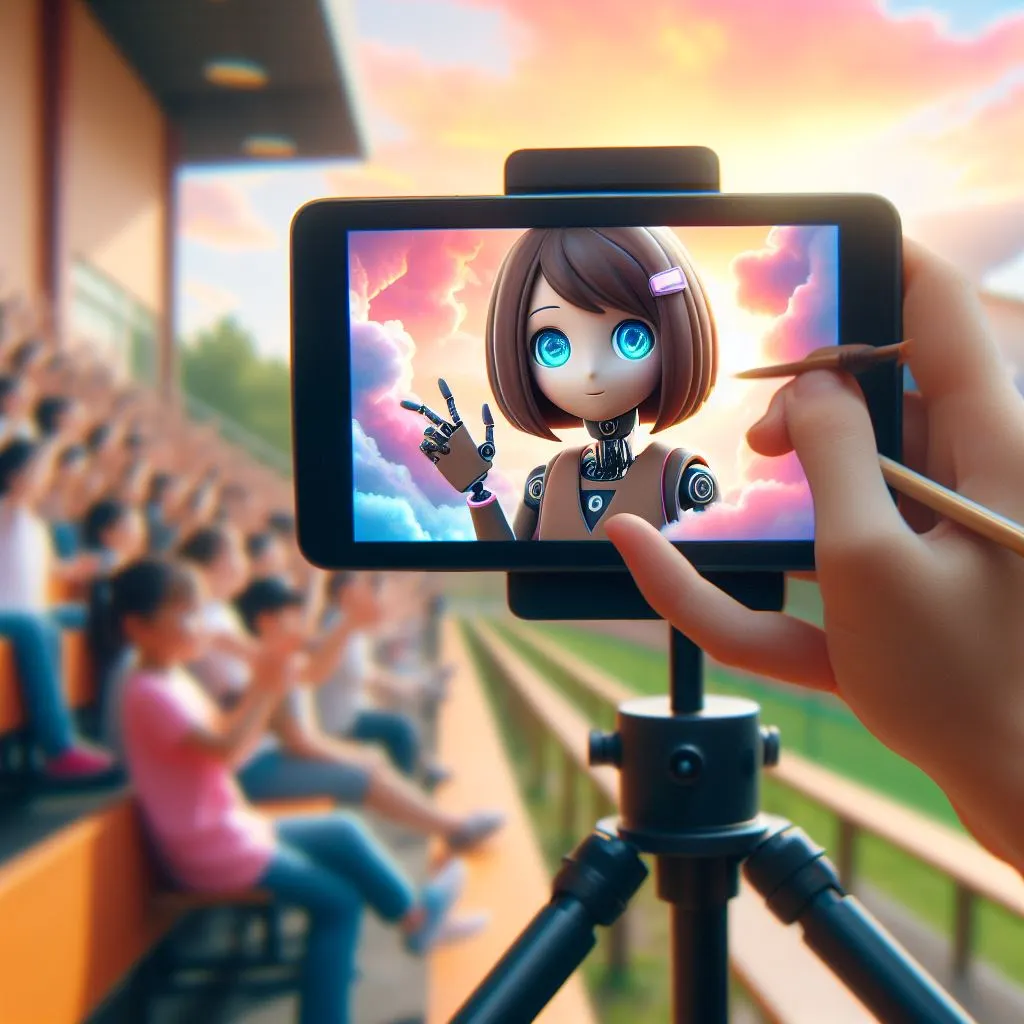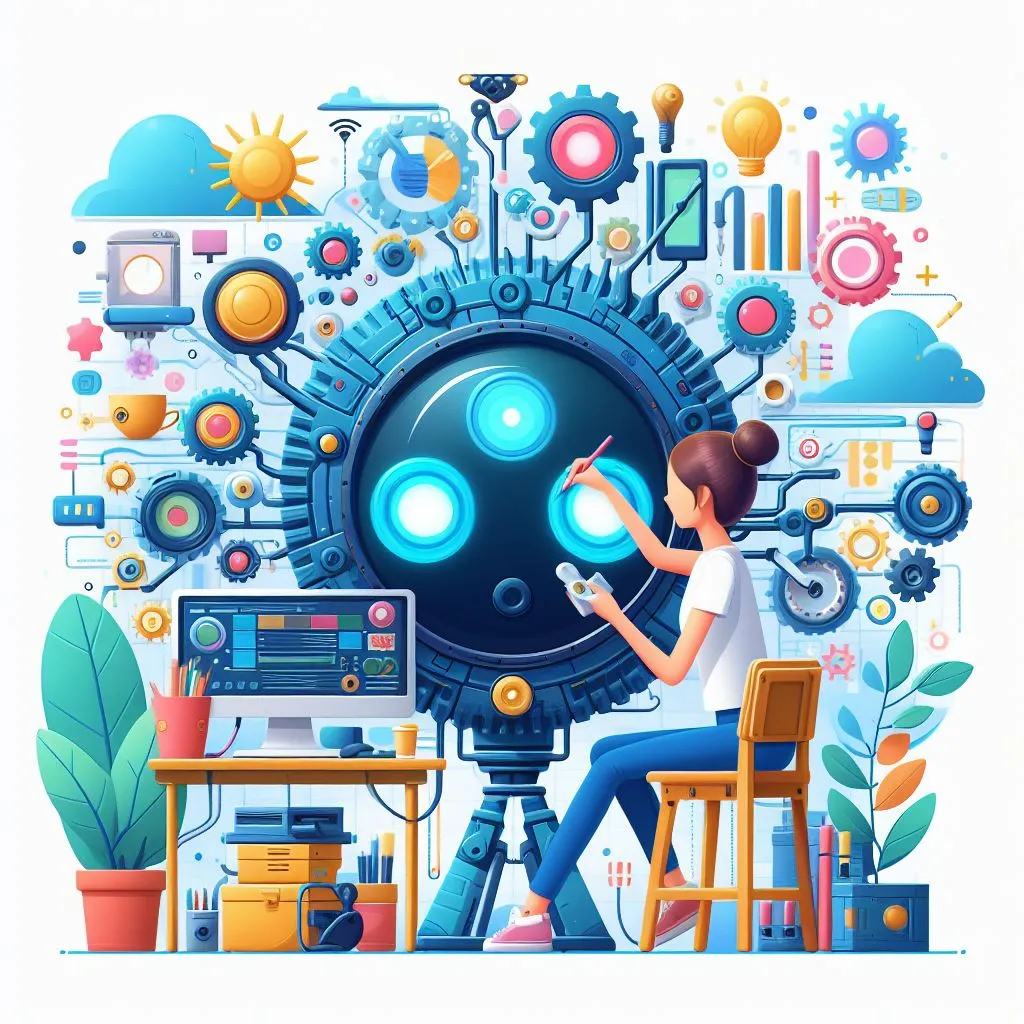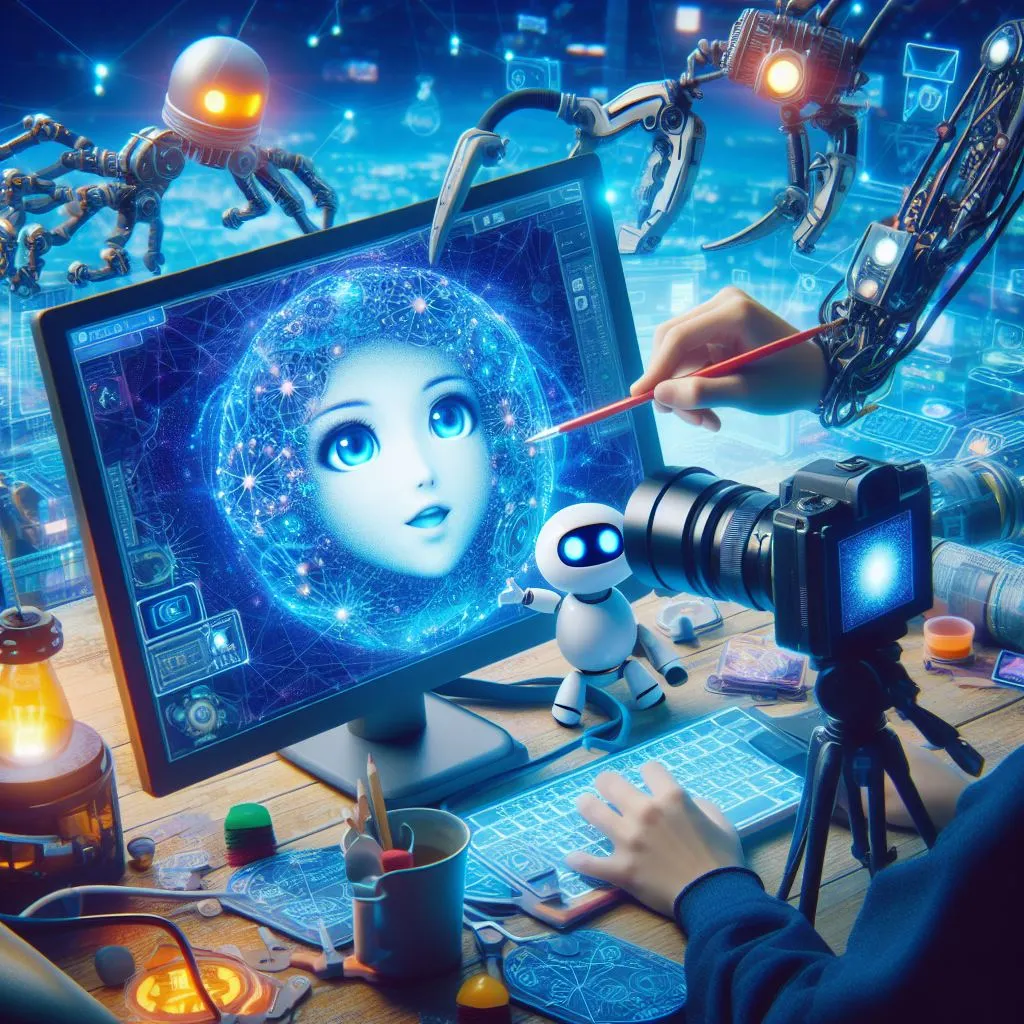Introduction
In the ever-evolving landscape of artificial intelligence, a new player has emerged that is poised to revolutionize the way we create and consume video content. Introducing Sora, OpenAI’s cutting-edge text-to-video generation tool that has generated a surge of excitement and intrigue within the tech community.
Sora represents a significant advancement in the field of generative AI, offering users the ability to transform simple textual descriptions into captivating, realistic video sequences. By bridging the gap between the written word and the moving image, this innovative technology promises to unlock new frontiers of creativity, storytelling, and even educational and marketing applications.
What is OpenAI Sora?

Sora, an AI model developed by the renowned research company OpenAI, known for its groundbreaking advancements in the field of artificial intelligence, represents a significant leap in new technology, specifically in ai video generation. This powerful tool is capable of generating video clips of up to one minute in length, all based on concise textual prompts provided by the user.
At its core, Sora is a diffusion model that has been trained on a vast array of video data, allowing it to establish strong associations between language and visual representations, marking it as an innovative video generator. By leveraging advanced natural language processing and deep learning techniques, Sora can interpret even the most nuanced prompts and translate them into dynamic, visually compelling scenes, showcasing its prowess as a leading video generator.
One of the standout features of Sora is its ability to maintain a high level of visual quality and narrative coherence throughout the generated video. Unlike previous attempts at text-to-video generation, Sora is able to consistently depict the details and events described in the prompt, ensuring a seamless and immersive viewing experience, marking a milestone in photorealistic ai video content creation.
The Potential of Sora
The release of Sora has generated a wave of excitement and speculation within the tech community, as the potential applications of this technology are far-reaching and transformative.
Creative Industries
For filmmakers, visual artists, and designers, Sora opens up new avenues for creativity and exploration through videos generated by Sora. The ability to generate storyboard visuals or short film sequences directly from a script can streamline the production process and unlock new creative possibilities. Sora can also be utilized to quickly prototype and experiment with various visual ideas, allowing creatives to iterate and refine their concepts without the constraints of traditional video production.
Education and Training
In the educational realm, Sora holds the promise of revolutionizing the way we approach learning and knowledge dissemination, through its advancements in AI video generation. By creating detailed, visually engaging educational content based on textual descriptions, Sora can make complex topics more accessible and captivating for students of all ages. Imagine being able to generate animated explainer videos or interactive simulations to enhance the learning experience, all with a few lines of text.
Advertising and Marketing
The potential of Sora in the advertising and marketing sectors is equally compelling, particularly with its advancements in creating photorealistic ai video content. Brands can leverage this new AI technology to produce eye-catching video content for their campaigns, drawing from textual descriptions to create visually stunning and impactful marketing materials. This new technology can lead to a more efficient and streamlined content creation process, allowing companies to rapidly iterate and test different concepts without the need for extensive video production resources.
Gaming and Virtual Reality
The gaming and virtual reality industries are also poised to benefit from the advancements in text-to-video technology offered by Sora, heralding a new era of video generation in these fields. Developers can use Sora to enhance the storytelling and cinematic aspects of their games and VR experiences, generating dynamic visual sequences that seamlessly integrate with the interactive elements of the digital worlds they create.
The Capabilities of Sora

To fully appreciate the capabilities of Sora, it’s essential to delve into the technical details behind its operation, as outlined in the latest technical report.
Understanding and Simulating the Physical World
Sora, called Sora, is designed to have a deep understanding of the physical world and the way it operates, a testament to its advanced AI video generation ability. By simulating the intricate mechanics of motion, physics, and environmental interactions, the model is able to generate video sequences that adhere closely to the laws of reality, ensuring a heightened sense of realism and believability.
Text-to-Video Generation
At the core of Sora’s functionality, often highlighted in any sora review, is its ability to transform textual prompts into detailed, visually engaging video content, showcasing this new technology’s prowess in video generation. The model processes the provided text, comprehending the nuances and subtleties of the language, and then generates a corresponding video clip that captures the essence of the prompt.
Crafting Detailed Text Prompts
To harness the full potential of Sora, users must learn to craft precise and comprehensive text prompts that effectively communicate their desired visual outcomes. These prompts can range from simple descriptions of a scene to more complex narratives involving multiple characters, actions, and environmental elements.
Language Understanding and Emotion Expression
Sora’s remarkable understanding of language allows it to accurately interpret prompts and generate compelling characters that exhibit vibrant emotions and natural expressions, a feature highly praised in ai video and sora review discussions. This depth of linguistic comprehension, often discussed in a Sora review, is a crucial factor in the model’s ability to create video content that feels authentic and engaging, showcasing the advanced capabilities of AI technology.
Limitations and Challenges
While Sora represents a significant advancement in the field of text-to-video generation, it is not without its limitations and challenges. The model may struggle with accurately simulating the complex physics of certain scenes or understanding specific instances of cause and effect. Additionally, Sora may have difficulty capturing precise spatial details and precisely depicting events that unfold over an extended period of time, a challenge noted in many a sora review.
The Development of Sora

The creation of Sora has been a collaborative effort within the OpenAI research team, drawing upon the collective expertise and resources of the company’s renowned AI experts and engineers, akin to the development of Dall-E.
Training Sora
To develop Sora’s impressive capabilities, the OpenAI team has leveraged a massive dataset of video content, both licensed and publicly available. This expansive training data has allowed the model to establish robust associations between textual descriptions and their corresponding visual representations.
Additionally, there is speculation that OpenAI may have incorporated synthetic video data generated by gaming engines, such as Unreal Engine, to further enhance Sora’s understanding of the physical world and visual dynamics.
The Red Team Approach
In a strategic move to ensure the safe and responsible deployment of Sora, OpenAI has adopted a “red team” approach, granting access to the model to a select group of developers and researchers. This group of testers is tasked with rigorously testing Sora for potential harmful applications and vulnerabilities, allowing the OpenAI team to identify and address any concerns before a broader public release.
The Measured Release Strategy
OpenAI’s approach to Sora’s release has been deliberately measured and cautious. The company is currently limiting access to the model, primarily granting it to visual artists, designers, and filmmakers who can provide valuable feedback on how to refine and enhance Sora’s capabilities for creative professionals.
This measured approach reflects OpenAI’s commitment to responsible innovation, as the company aims to engage with a diverse range of stakeholders, including policymakers, educators, and artists, to understand their concerns and identify positive applications for this emerging technology.
Sora in Action: Showcasing the Technology
To give a tangible glimpse into the capabilities of Sora, let’s explore some of the sample video outputs that OpenAI has shared publicly in their technical report.
The Woman on the City Street
One of the most widely circulated Sora-generated videos, illustrating the potential of ai video, depicts a stylishly dressed woman walking down a bustling city street at night, demonstrating Sora’s photorealistic capabilities. The scene is brought to life with vibrant neon signs, pedestrians, and a captivating sense of movement and atmosphere, showcasing Sora’s ai video generation capability for creating photorealistic scenes.
While the video showcases Sora’s ability to create a visually stunning and immersive scene, a closer inspection reveals some minor inconsistencies, such as slight variations in the woman’s clothing and the occasional disappearance or reappearance of background elements. These small hiccups highlight the ongoing challenges in maintaining perfect visual continuity and coherence across an entire video sequence.
The Wooly Mammoths in the Snowy Meadow
Another intriguing Sora-generated video depicts a group of giant, woolly mammoths trekking through a snowy, picturesque meadow. The attention to detail in the rendering of the mammoth’s thick fur, their lumbering gait, and the surrounding environment is truly impressive.
However, as with the previous example, there are instances where the continuity of the scene is disrupted, with objects or elements appearing or disappearing unexpectedly. These subtle flaws serve as a reminder that Sora, while a remarkable achievement, is still a work in progress.
The Futuristic Spaceman Adventure
In a more fantastical example, Sora has generated a video sequence that resembles a movie trailer for “The Adventures of a 30-year-old Spaceman.” This clip showcases Sora’s ability to create imaginative, science-fiction-inspired visuals, complete with a futuristic spacecraft, a determined protagonist, and a sense of dramatic action and adventure.
While the overall visual impact is striking, the video still exhibits some of the consistency issues observed in the previous examples, hinting at the continued challenges in maintaining seamless transitions and coherent narratives across an extended video sequence.
The Implications and Concerns
The emergence of Sora has not only generated excitement and anticipation but has also raised important questions and concerns within the tech community and beyond.
The Potential for Misuse and Disinformation
One of the primary concerns surrounding Sora is its potential to be misused for the creation of deepfakes and the spread of digital misinformation. The ability to rapidly generate realistic video content from simple text prompts could make it easier to fabricate false narratives and manipulate visual evidence.
Experts in the field of digital forensics have expressed concerns about the difficulty in detecting Sora-generated content, as existing analysis tools may struggle to differentiate these AI-created videos from genuine footage. This challenge highlights the need for robust authentication and provenance-tracking mechanisms to ensure the integrity of videos generated by Sora.
The Impact on Creative Professions
While Sora and similar text-to-video tools hold immense potential for creative industries, there is also a valid concern about the potential disruption they may cause to the livelihoods of those working in these fields. The ability to generate high-quality video content from scratch could significantly impact the demand for traditional video production services, potentially displacing many professionals in the industry.
This raises complex questions about the ethical and economic implications of such transformative technologies, and the need for policymakers, educators, and industry leaders to collaborate on strategies that safeguard the well-being of creative workers while also embracing the benefits of these advancements.
The Importance of Context and Nuance
As with any technological innovation, it’s crucial to maintain a balanced perspective on the potential risks and benefits of Sora, especially considering its potential in the realm of ai video generation. Experts caution against overstating the harms or exaggerating the capabilities of the model, as this can contribute to the perpetuation of hype and misinformation.
The emergence of Sora should be viewed within the broader context of the ongoing challenges surrounding digital misinformation and the need for multifaceted solutions that address both technological and societal factors. While Sora may accelerate certain problems, it is not the sole or primary cause of these issues, and addressing the root causes will require a comprehensive approach involving education, legislation, and collaborative efforts.
The Road Ahead
As OpenAI continues to refine and develop Sora, the future of this transformative text-to-video technology remains both exciting and uncertain.
Ongoing Testing and Safety Measures
OpenAI’s measured approach to Sora’s release, with a focus on thorough testing and collaboration with diverse stakeholders, reflects the company’s commitment to responsible innovation. The continued engagement with “red team” developers and the incorporation of content authentication protocols, such as the Coalition for Content Provenance and Authenticity (C2PA) standard, are crucial steps in ensuring the safe and ethical deployment of this powerful tool.
Potential for Continued Advancements
As Sora’s development progresses, it is reasonable to anticipate ongoing advancements in the model’s capabilities, addressing the current limitations and further enhancing the realism, continuity, and narrative coherence of the generated video content. The integration of more sophisticated physics simulations, improved understanding of cause-and-effect, and refined language processing could lead to even more impressive and convincing text-to-video outputs.
The Future of Creative Expression and Storytelling
Looking ahead, the widespread adoption of Sora and similar text-to-video technologies could profoundly transform the landscape of creative expression and storytelling, making it an essential facet of new AI technology. By democratizing the video production process and lowering the barriers to entry, these tools could empower a new generation of creators, unleashing a wave of innovative and imaginative content that pushes the boundaries of what is possible in the digital realm.
At the same time, the industry and policymakers will need to grapple with the complex challenges posed by these advancements, working to strike a balance between fostering innovation and mitigating potential harms. Ongoing dialogue, interdisciplinary collaboration, and a commitment to responsible development will be crucial in shaping the future of this transformative AI technology.
Conclusion
The emergence of OpenAI’s Sora represents a pivotal moment in the evolution of artificial intelligence and its impact on our visual landscape, introducing a new era of AI technology in creative fields. This groundbreaking text-to-video generator has the potential to revolutionize creative industries, educational practices, and the very nature of how we consume and interact with digital content.
As Sora continues to push the boundaries of what is possible, it is incumbent upon the tech community, policymakers, and society as a whole to navigate the complex ethical and societal implications with foresight and diligence. By embracing the opportunities presented by Sora while addressing the legitimate concerns, we can harness the power of this transformative technology to unlock new frontiers of creativity, storytelling, and knowledge sharing, ultimately enriching the human experience in the digital age.


